There was chatter and a lot of activity all around Kaliperumal when his boat left the shores of Ceylon early one morning in 1966. As the passengers settled down and the boat headed north toward the horizon, talk became sparse.
Occasionally, a child posed a question, loud and clear over the constant rumble of the waves. The responses were brief and often monosyllabic. Kaliperumal, then 11, and the other children, were curious to know what was in store for them when they reached their destination.
The adults, too, wore curious and worried looks. They have received promises of a better life in a land where they had their roots. Yet the land was foreign to them, far away from their familiar plantations.
Kaliperumal was both excited and worried. But somewhere deep down in his mind, he knew something was amiss, he would recall decades later.
Several such boats had left the shores of Ceylon since the then Indian prime minister Lal Bahadur Shastri signed an agreement with his counterpart in the island nation, Sirimavo Bandaranaike, in October 1964, to take back the “estate Tamilians”.
DS Senanayake, the first Ceylonese prime minister had stripped the estate Tamilians of their citizenship in 1949, a year after the country gained independence from the British. Successive governments tried to remove them from the country, culminating in two pacts between Ceylon — now Sri Lanka — and India: One in 1964 and the second, 10 years later with Indira Gandhi.
The two countries agreed that estate Tamils would go to India over 15 years. Kaliperumal and his family were among those Tamils, forced to cross the Palk Straits, the same waters between Tamil Nadu and Jaffna, that their predecessors had crossed in the 19th and early 20th centuries.
The British had then taken them to work at the tea, cardamom and coffee estates in the central province of the island, also known as the teardrop of India.
A new identity
A few days later at a camp in Tamil Nadu, Kaliperumal and others hit the road. They travelled further north, across the plains and crossed the state where they once had their roots. Kaliperumal felt the landscape looked similar to that back home as he had the first glimpse of the mountains in Kerala.
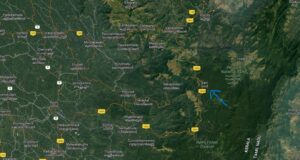
Alien in God’s Own Country
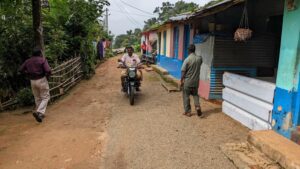
Her husband Rajeswaran, already retired, also forms part of the ecotourism project as a driver.
Also read: NYT puts another feather in Kerala’s cap
Over time
Along with the many pristine forests of South India, Gavi, which forms a crucial part of the present-day Periyar Tiger Reserve, was opened up to create a cardamom estate under the KFDC. It was created exclusively to rehabilitate families from Sri Lanka.
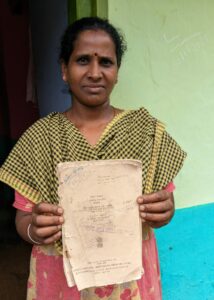
Also read: Pristine Gavi soon turns 3rd tiger reserve for Kerala
Ground reality
It has been half a century since the Gavi settlement was created for Tamil repatriates from Sri Lanka.
Almost half the families have left the forests, searching for alternative means of survival in different parts of Tamil Nadu. There are hardly 183 families left, spread across the Gavi, Meenar, and Pamba estates of the KFDC.
As there is no cardamom production, these families have temporarily been assigned jobs under the ecotourism facility, which includes boating, safari rides, trekking, and jungle camping.
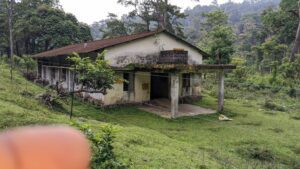
“I prefer die here, where I gained nothing, but experienced a lot,” he told South First.
Also read: Andhra’s oil palm farmers are battling a triple threat
The younger generation
The situation in the KFDC’s other repatriated Tamils’ rehabilitation projects — like those in Kulathupuzha and Arippa in Thiruvananthapuram, Thavinjal in Wayanad, and Nelliyampathy in Palakkad — is almost the same.
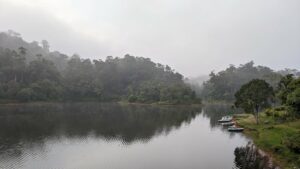
In most cases, the younger generation has worked as temporary hands.
Also Read: Munnar, and a century-old flood that devastated it
Authorities confused
The KFDC officials, too, appeared confused over the future of Gavi, with the lease period of the plantation set to expire by 2025. Privately, they confided that the rehabilitation amount promised is meagre.
Prakriti Srivastava, a senior forest officer who retired on 31 July as the state special officer for the Rebuild Kerala Initiative (RKI), said as many as 601 non-tribal families living in settlements inside the forests had been relocated under the “Navakiranam” voluntary relocation scheme implemented by the Kerala Forest Department so far.
She said as many as 894 more families would be shifted under the scheme, including those from Gavi.
The state government announced the project in 2019 to relocate people facing attacks from wild animals and landslide threats in isolated forest areas. As per the scheme, a couple owning up to two hectares of land with title deeds will get ₹15 lakh as compensation.
She said as a special case, KFDC employees who lack land or title deeds would get special consideration under the project.
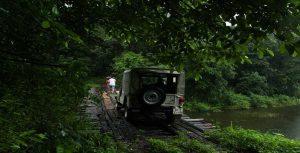
She added that the project had been implemented in 26 out of 34 forest divisions in the state.
Vaikom Satyagraha: Thanthai Periyar’s role and his differences with Gandhi
Repatriates want more
But the Tamil repatriates said they could not purchases land with the meagre amount even in the remote corners of Kerala.
They demanded a compensation of at least ₹25 lakh a unit, considering the prevailing land prices in Kerala.
Most repatriates retain the documents of their repatriation, which continued till 1983, when the ferry service between Talaimannar in Sri Lanka and Rameswaram in India was suspended due to militancy in northern Sri Lanka.
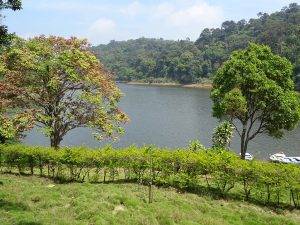
According to data from the Union government, as many as 4,61,630 Tamil repatriates live in India now. They belong to 1,16,152 families.
Of these, 3,33,843 were repatriated under different bilateral agreements. The remaining represents a natural increase.
Among the people who returned to India, 4,639 families were moved to Kerala, Karnataka, and Andhra Pradesh, and rehabilitated in projects that the respective governments started. The rest are working with tea plantations in Tamil Nadu.
“For many of us, Gavi was a new world where even the language was different. It was an arduous task to create cardamom estates inside the forests known for rains throughout the year,” 58-year-old Durailingam told South First.
He said the KFDC’s ecotourism initiative is now making profits, and tourists are reaching the pristine destination daily.
“If they can properly expand the project by adding more attractions, they can easily utilise us. We already proved we can do wonders in ecotourism. Now the roads are in good condition, and efforts are on to install mobile and internet towers. Why don’t they use the changing scene in a way favourable to us,” he asked.
